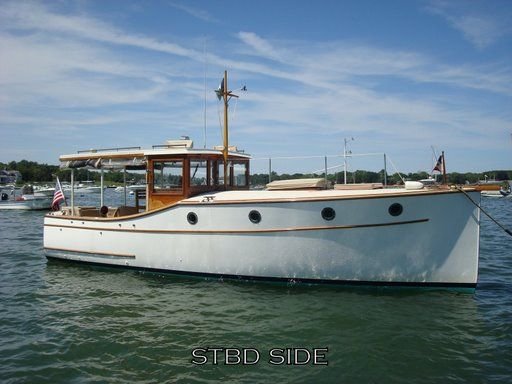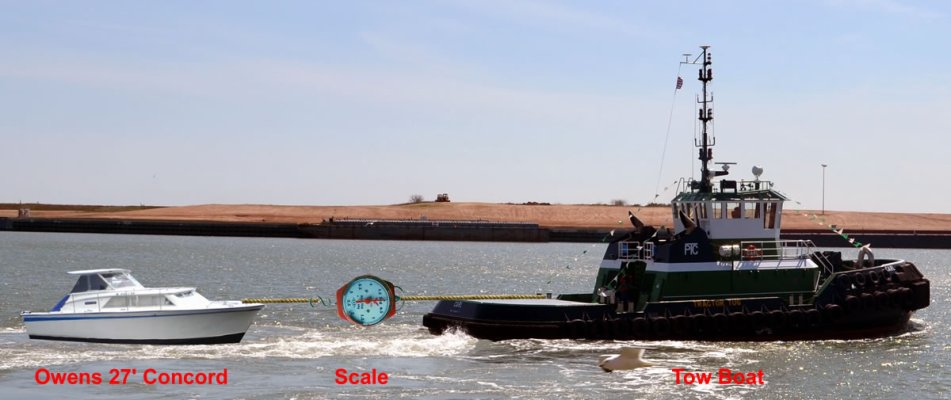CPseudonym
Moderator Emeritus
This thread is for me to research the feasibility of converting my 1967 27' Owens Concorde to plug in electric propulsion power. Current power comes via 350 cid Chevy engine with Borg Warner velvet drive transmission(I believe a 1.34-1 gear ratio). Electric head, fridge and 2 burner cook top. 1 rather large (66"x32")solar panel can be fitted to the hard top without affecting the appearance of the boat. 3 additional while possible on the cabin top would affect the use and looks of the boat enough to be less desirable.
Our current use of the boat is mostly day trips of less than 30 miles out and back, however overnight and multi-day trips are in our future. Protected inland waterways with moderately slow tides are the norm rather than the exception in my cruising area. Assume no more than 3 days away from the dock. If longer trips are desired a small generator may need to be compromised into the equation.
I imagine the design will incorporate the use of LiFePO4 battery cells for power storage. The amount of storage needed will need to be determined. The horsepower of the motor would ideally provide for up to 10 kn of speed but 7 or less would be acceptable too. All interior and exterior lighting will be LED.
How close to reality are my expectations to the current state of electric propulsion and battery storage technology? For our purposes here let us assume future resale value is of no concern to me.
Thank you,
Our current use of the boat is mostly day trips of less than 30 miles out and back, however overnight and multi-day trips are in our future. Protected inland waterways with moderately slow tides are the norm rather than the exception in my cruising area. Assume no more than 3 days away from the dock. If longer trips are desired a small generator may need to be compromised into the equation.
I imagine the design will incorporate the use of LiFePO4 battery cells for power storage. The amount of storage needed will need to be determined. The horsepower of the motor would ideally provide for up to 10 kn of speed but 7 or less would be acceptable too. All interior and exterior lighting will be LED.
How close to reality are my expectations to the current state of electric propulsion and battery storage technology? For our purposes here let us assume future resale value is of no concern to me.
Thank you,




